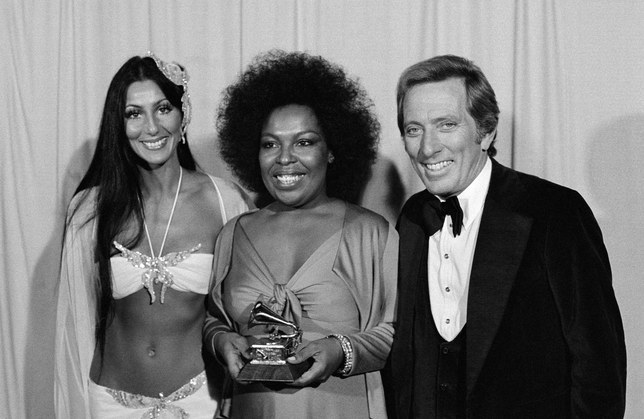These Staggering Graphics Show How Few Women Have Been Nominated in Key Categories at the Grammys Since 1959

The 2018 award season has already been markedly altered by the #MeToo and #TimesUp movements, from actors wearing black at the Golden Globes to the SAG Awards’ decision to have only female presenters. At the Grammy Awards this weekend, the spotlight will shift to the music industry, which has seen its own share of sexual harassment scandals during the past year—from Kesha to Russell Simmons. Musicians, producers, and managers will be wearing white roses on the red carpet to support Time’s Up, and Kesha’s performance will reportedly speak to the #MeToo movement.
Much like the award ceremonies that spotlight the year’s noteworthy performances on the big and small screen, however, there’s a deeper story to be told around how women are represented at the big award shows for music—and there’s no bigger music award, arguably, than a Grammy.
For this awards season we’re eschewing some of the standard fare of previous years—consistent “Best Dressed” roundups, for example—to focus on spotlighting the ways women are changing the entertainment industry, from record-breaking awards to the perspective-shifting performances. We’re also digging into the data behind key categories at all the major award shows. Just how often do women get nominated? And how often do they win? And are we getting better at being truly representative of the people listening to music or watching shows?
Our reasoning is simple: We believe that better representation—in all areas of the entertainment industry—means healthier workplaces and better storytelling.
2018 marks 60 years of Grammy Awards, and we looked at the data in major, gender-neutral categories all the way back to 1959—including Record of the Year, Album of the Year, Song of the Year, and Best New Artist. (Note: Across all of these categories, we excluded groups of more than 10-12—the ensemble cast of a musical, for example, or the various artists that worked on a movie’s soundtrack—totaling 13 exclusions in all since 1959.) It wasn’t an enormous surprise that musicians and songwriters who identify as female are underrepresented here—as they are across other entertainment award stages—but the percentages are truly staggering. In an industry where artists like Cardi B and Taylor Swift have dominated headlines, the lion’s share of the accolades are still consistently awarded to men in these categories.
Across the field, only 21 percent of the nominees since 1959 have been women and only 23 percent of the winners.
Only 24 percent of artists who identify as female have been nominated for Record of the Year, and only 22 percent have been winners.
For Album of the Year, one of the most distinctive awards at the Grammys (not to mention hotly contested: see Beyoncé’s much-discussed snub in 2017), only 20 percent of the nominees have been women and only 21 percent of the winners. There have been 11 years during the Grammys’ 60-year history where no women were even nominated.
Song of the Year, which is awarded to a songwriter (or songwriters), has the fewest female nominees of all the categories we looked at. Only 17 percent of overall nominees were women and only 16 percent of the winners. Since 1959, there have been 14 years where there were zero women nominated in this category.
The Best New Artist category fares slightly better than the others, with 24 percent of the nominees being female and a whopping 32 percent of the winners. (It’s still low, but significantly higher than the others.) This presents a question, however: Why the drop-off from ‘Best New Artist’ to the other categories? Why are women more routinely heralded as promising newcomers, but not necessarily industry heavyweights?
It’s also worth noting that this data presents just a limited window into women’s representation in the overall business and doesn’t factor in the gaping inequality that women of color, for example, face. This limited window, however, does already offer a pretty stark portrait of how far we have to go. The good news is that music—and the entertainment industry broadly—has a long legacy of artists speaking up and getting loud. Change is sure to follow.
You can explore the data in even more detail below, where you can hover over any of the many individual bubbles to see each nominee, male (in gray) or female (in peach), the work for which they were nominated, and the year—all the way back to 1959. You can also filter the data by gender and by winner.
Graphic: Condé Nast Data Visualization
MORE GRAMMYS:
-
See the Full List of 2018 Grammy Award Nominees
-
The Grammys Did Not Give Enough Shine to These Women This Year

